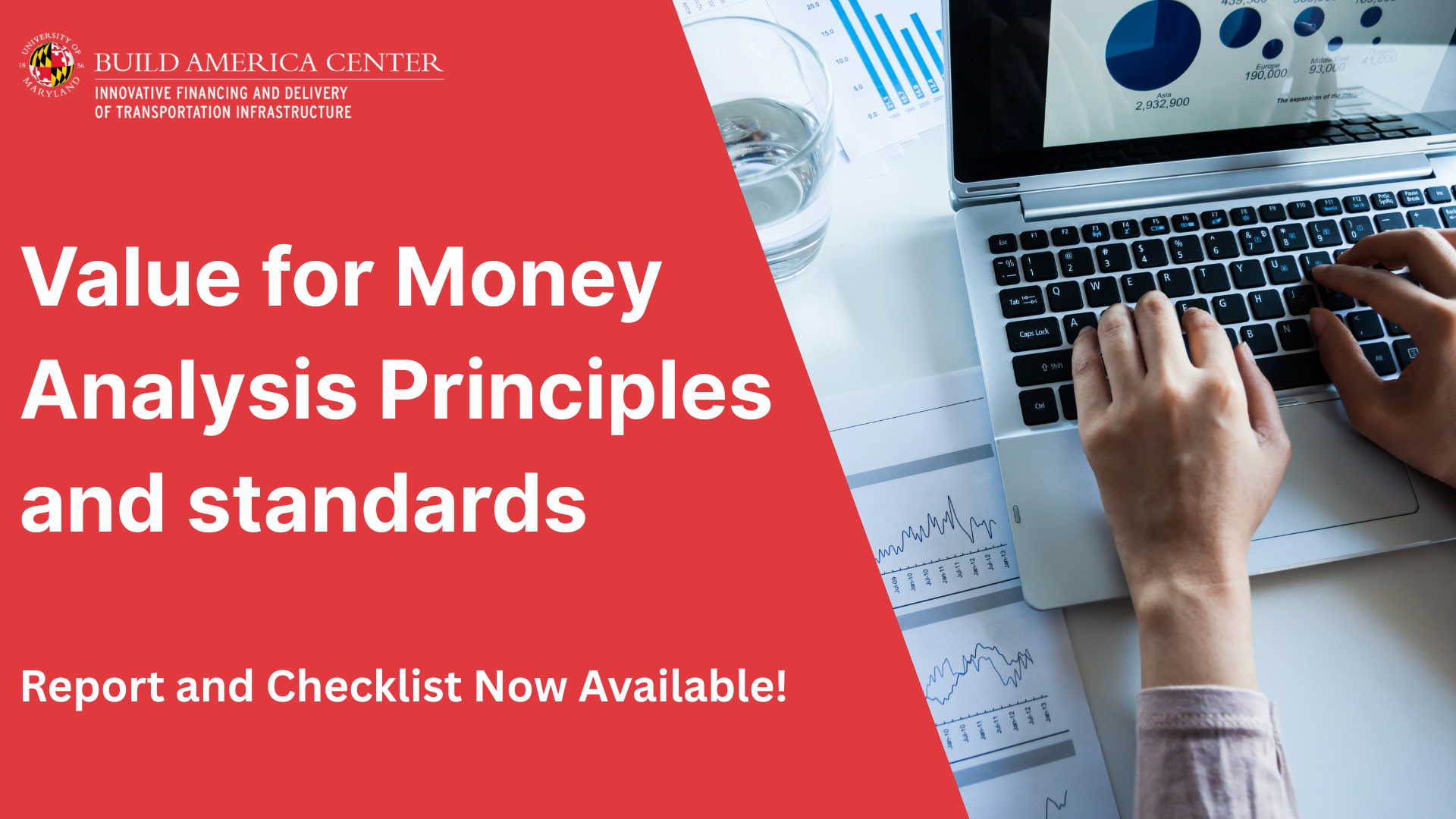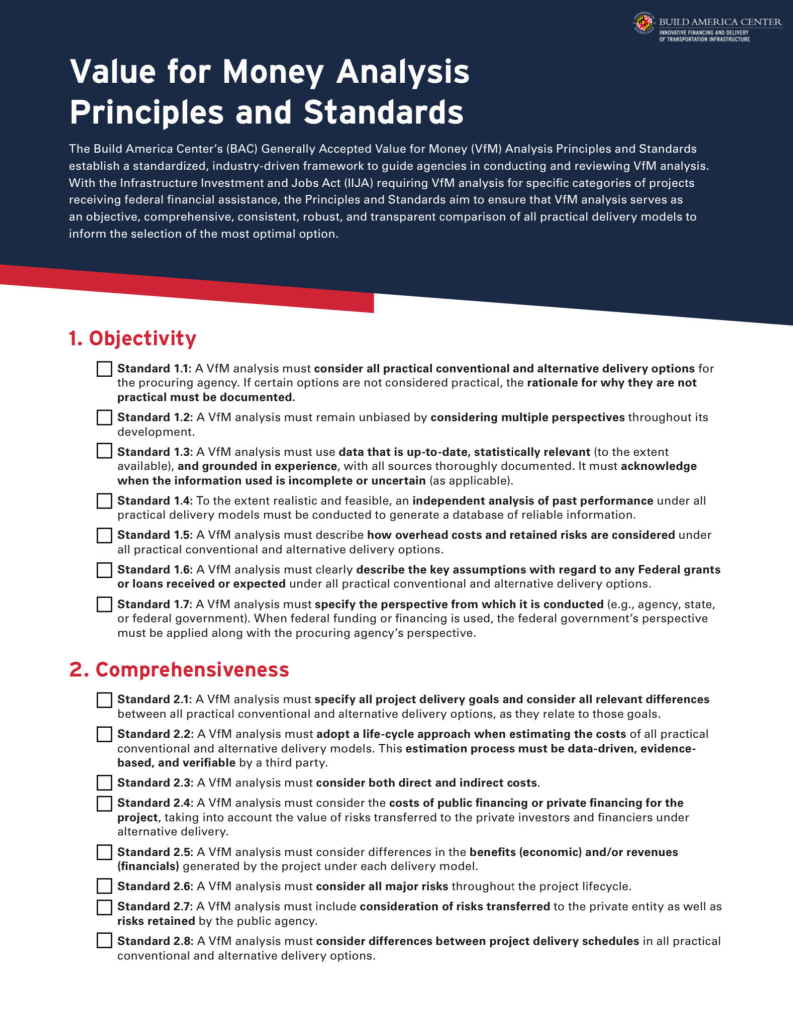The Build America Center (BAC) is excited to announce the release of the Generally Accepted Value for Money (VfM) Analysis Principles and Standards publication and its accompanying Principles and Standards Checklist. This comprehensive framework provides a standardized approach for evaluating infrastructure project delivery models, offering valuable guidance to agencies navigating the requirements of the Infrastructure Investment and Jobs Act (IIJA).
What is the VfM Analysis?
Value for Money (VfM) Analysis is a structured tool used to compare different project delivery methods, including Public-Private Partnerships (P3s), to determine the most cost-effective, risk-adjusted, and high-quality approach. Unlike benefit-cost analysis (BCA) or financial feasibility assessments, which determine whether a project is societally beneficial or financially viable, VfM Analysis focuses on evaluating the best delivery method for an already approved project by comparing projected financial risks, efficiencies, and performance metrics.
Why is This Important?
The IIJA mandates VfM analysis for certain federally funded projects, making it essential for decision-makers to conduct fair, objective, and well-documented comparisons between traditional and alternative delivery models. By adopting these principles and standards, agencies can ensure their analyses are consistent, transparent, and grounded in best practices.
How Were the Principles and Standards Developed?
The development of the VfM Analysis Principles and Standards involved extensive industry outreach, including stakeholder surveys, roundtable discussions, and reviews of best practices. The principles emphasize objectivity, comprehensiveness, consistency, robustness, and transparency. The accompanying checklist offers a practical tool for agencies to ensure alignment with these principles throughout their VfM analyses.
The checklist is structured around five key principles:
- Objectivity: Use unbiased, fact-based, and the best available information to consider all realistic delivery models without pre-existing bias.
- Comprehensiveness: Evaluate benefits, costs, and risks over the entire project life cycle, ensuring an apples-to-apples comparison.
- Consistency: Apply the same project scope, standards, procedures, and assumptions consistently throughout the analysis.
- Robustness: Use realistic assumptions, account for uncertainties, and conduct sensitivity analyses to test variable impacts.
- Transparency: Clearly disclose analysis methods, assumptions, and data sources to ensure findings are verifiable and understandable.
Click below to view/download the report and checklist.





